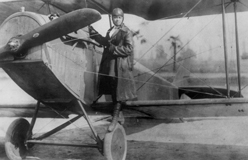Bessie Coleman was not able to fulfill her dream of opening a flight school for Black women.
But she remains an inspiration. She may be remembered by name or not. Either way her legacy lives on in the growing number of Black female pilots flying our planes today.


